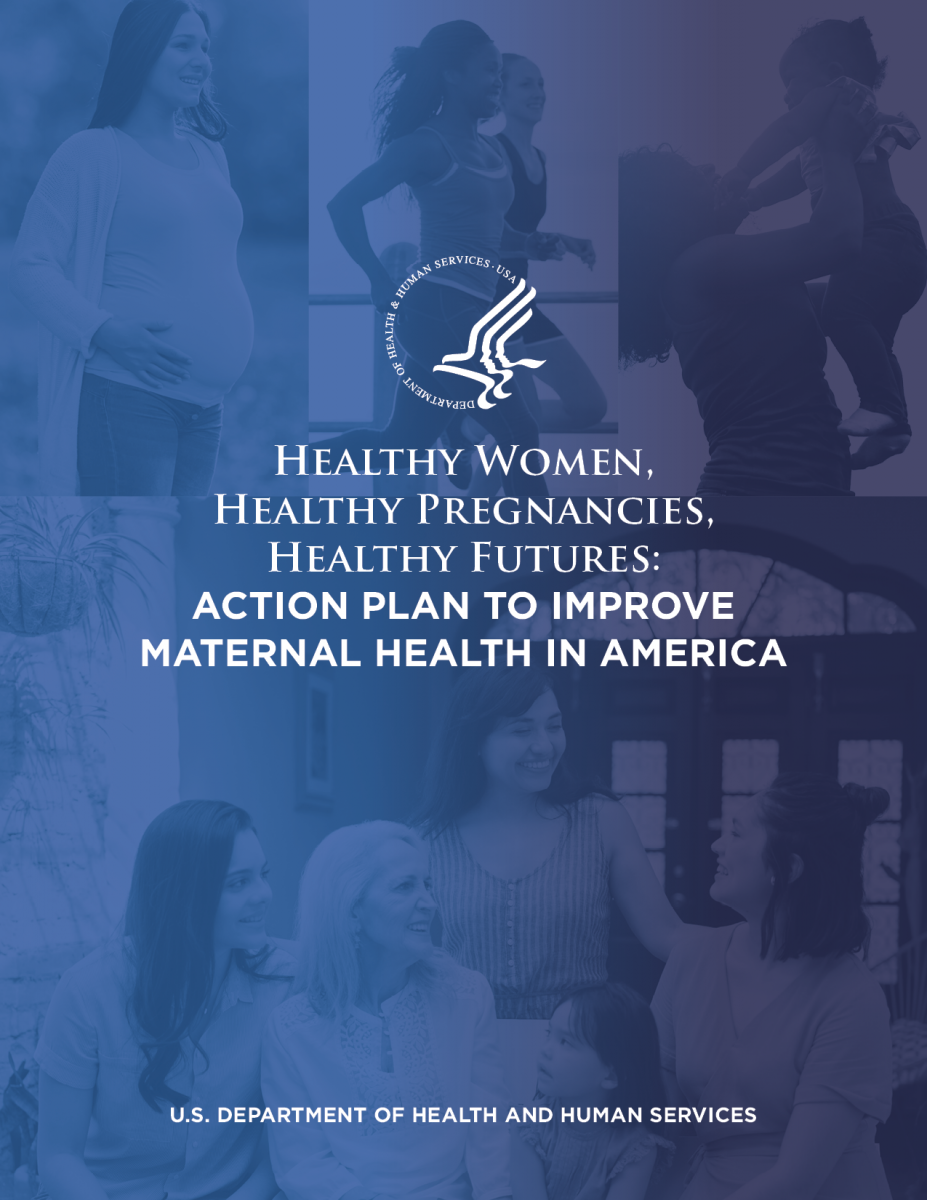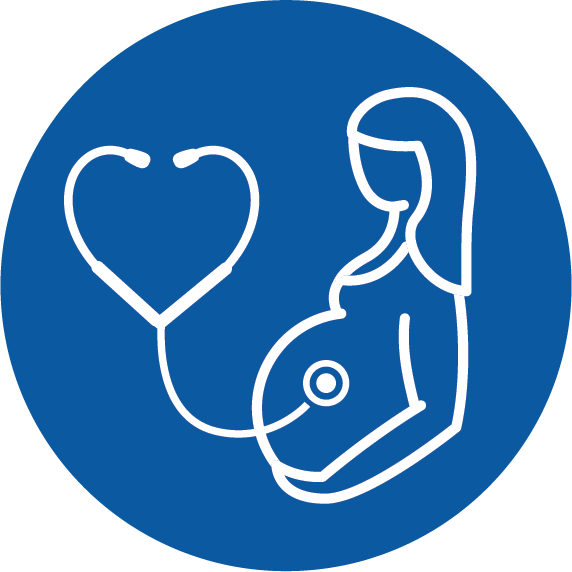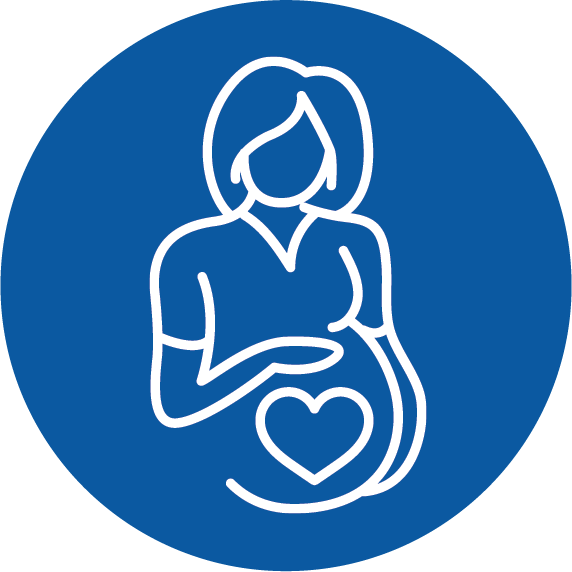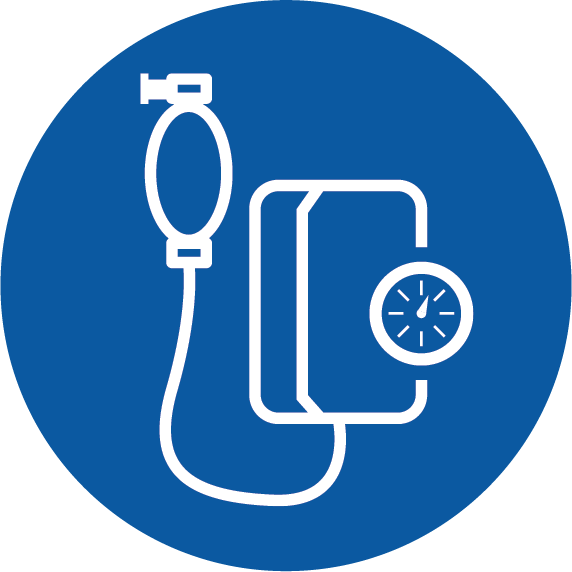 As part of the Administration's broader efforts to improve health in America, the United States (U.S.) Department of Health and Human Services (HHS) is announcing its vision for ensuring the U.S. is one of the safest countries in the world for women to give birth.
As part of the Administration's broader efforts to improve health in America, the United States (U.S.) Department of Health and Human Services (HHS) is announcing its vision for ensuring the U.S. is one of the safest countries in the world for women to give birth.
In order to realize this vision, America's women and their families need a health care system they can rely on – a health care system that delivers care that is safe, high quality, and evidence-based – and strong communities to draw upon for support. They need a holistic approach to care that proactively identifies risk factors for poor maternal health outcomes (e.g., medical conditions, behaviors, or life circumstances) and engages a comprehensive set of resources, including clinical, behavioral, and social supports, to help mothers and their babies attain optimal pregnancy, birth, and post-delivery outcomes.
 The Healthy Women, Healthy Pregnancies, Healthy Futures: The U.S. Department of Health and Human Services' Action Plan to Improve Maternal Health in America outlines this vision in full.
The Healthy Women, Healthy Pregnancies, Healthy Futures: The U.S. Department of Health and Human Services' Action Plan to Improve Maternal Health in America outlines this vision in full.
The four goals and three targets outlined in the Action Plan are as follows:
 Goal 1: Healthy Outcomes for All Women of Reproductive Age
Goal 1: Healthy Outcomes for All Women of Reproductive Age
Because the most common cause of pregnancy-related death is cardiovascular and coronary conditions, it is critically important that the Department's Action Plan prioritize prevention and treatment of cardiovascular disease. Cardiovascular disease and coronary conditions have a significant impact on every stage of women's lives – for example, high blood pressure during pregnancy increases the risk for future cardiovascular disease and death.
The Department will make new investments in evidence-based prevention and treatment strategies for cardiovascular disease and other significant medical risk factors, and disseminate evidence-based public health messages that are culturally appropriate for high-risk populations.
Objective 1.1 Improve prevention and treatment of cardiovascular disease for women of reproductive age by more effectively controlling blood pressure and preventing hypertension
Objective 1.2 Encourage evidence-based preventive and disease management services for other significant medical risk factors
 Goal 2: Healthy Pregnancies and Births
Goal 2: Healthy Pregnancies and Births
Implementing evidence-based clinical best practices and payment reforms aimed at reducing low-risk cesarean delivery births and providing patient-centered prenatal care to pregnant women have great potential to improve maternal health outcomes. In order to improve the quality of maternity care throughout pregnancy and delivery, the Department will support efforts to implement and expand adoption of evidence-based maternal health care through the three strategies described below. In addition to improving the health of all pregnant women, HHS aims to reduce disparities in health outcomes for populations that have been especially at risk.
Objective 2.1 Align provider payment with positive outcomes and quality improvement achievements, such as reducing low-risk cesarean deliveries
Objective 2.2 Support efforts to expand adoption of evidence-based clinical best practices in maternal health and obstetrics
Objective 2.3 Improve access to high-quality prenatal care and delivery services for at-risk populations
 Goal 3: Healthy Futures
Goal 3: Healthy Futures
The Department aims to improve support for women and their families during the postpartum period by assisting efforts to increase the quality of postpartum care, including increasing rates of screening and treatment for risk factors and complications including, but not limited to, intimate partner violence, behavioral health conditions including postpartum depression, and substance use disorder (SUD) that can have an in impact on both the health of mothers and their newborn children. Additionally, to help infants have a healthy start on life, the Department will improve access to information on taking care of a newborn child, such as childbirth education, breastfeeding, safe sleep practices for babies, parenting skills, self-esteem building, family supports, and healthy child development.
Objective 3.1 Improve the quality of, and access to, postpartum care, especially mental health and substance use services
Objective 3.2 Improve infant health outcomes by promoting the development of strong parent-child relationships
 Goal 4: Improve Data and Bolster Research
Goal 4: Improve Data and Bolster Research
HHS aims to enhance the quality and timeliness of maternal health data and metrics to strengthen surveillance and drive quality improvement. Although important efforts have been devoted to improving the quality of maternal and birth vital health statistics, much more can be done to advance the field by supporting states in addressing current shortfalls in data accuracy, improving the timeliness of data collection, ensuring the capture of race/ethnicity and other important patient characteristics, and developing better metrics for maternal health outcomes. Improving data will support research to better understand the causes of poor health outcomes and identify effective approaches to overcoming them, assist women in understanding the implications of risk factors and actions they can take to address them, help policymakers design public health solutions, and aid providers in recognizing when they need to redesign their care processes to align with evidence-based best practices that support value-based care.
Objective 4.1 Enhance maternal health surveillance by improving data collection transparency, timeliness, and standardization, to be able to stratify by risk factors
Objective 4.2 Advance a research agenda to identify effective, evidence-based best practices in maternal health, including those addressing clinical, environmental, and socioeconomic factors
TARGETS
 |
Target 1: Reduce the maternal mortality rate by 50 percent in 5 years. |
 |
Target 2: Reduce the low-risk cesarean delivery rate by 25 percent in 5 years. |
 |
Target 3: Achieve blood pressure control in 80 percent of women of reproductive age with hypertension in 5 years. |
 This Maternal Health Action Plan aims to achieve targets that are ambitious, yet attainable. HHS is focusing on reducing the rate of maternal mortality as its topline target for improving maternal health outcomes. Addressing the factors contributing to maternal mortality will translate into reductions in maternal morbidity that can have important short-term and long-term implications for the health of mothers and babies. We selected reducing low-risk cesarean deliveries, defined as nulliparous, term, singleton, vertex cesarean deliveries as our second target, because cesarean deliveries, in general, increase the likelihood of maternal morbidity.
This Maternal Health Action Plan aims to achieve targets that are ambitious, yet attainable. HHS is focusing on reducing the rate of maternal mortality as its topline target for improving maternal health outcomes. Addressing the factors contributing to maternal mortality will translate into reductions in maternal morbidity that can have important short-term and long-term implications for the health of mothers and babies. We selected reducing low-risk cesarean deliveries, defined as nulliparous, term, singleton, vertex cesarean deliveries as our second target, because cesarean deliveries, in general, increase the likelihood of maternal morbidity.
In addition, the U.S. has one of the highest rates of cesarean deliveries in the world, and the rate has been rising. These low-risk cesarean deliveries occur among women who are pregnant for the first time, are at a minimum 37 weeks of gestational age, and giving birth to a single baby (not twins or multiples) that is in the vertex position (positioned in the uterus with the head down). We use this rate because it accounts for the most common medical indications for cesarean delivery: preterm or multiple births and fetal positioning. Additionally, the majority of women who receive a cesarean delivery require subsequent cesarean deliveries for future births, so avoiding a low-risk cesarean delivery reduces the likelihood of subsequent cesarean deliveries. We are focusing on improving rates of blood pressure control for women of reproductive age with hypertension for our third target, since uncontrolled hypertension puts women at higher risk of experiencing a number of serious pregnancy complications and at higher lifelong risk of cardiovascular disease. Additionally, hypertension has important implications for infant health outcomes.
HHS Outlines New Plans and a Partnership to Reduce U.S. Pregnancy-related Deaths

